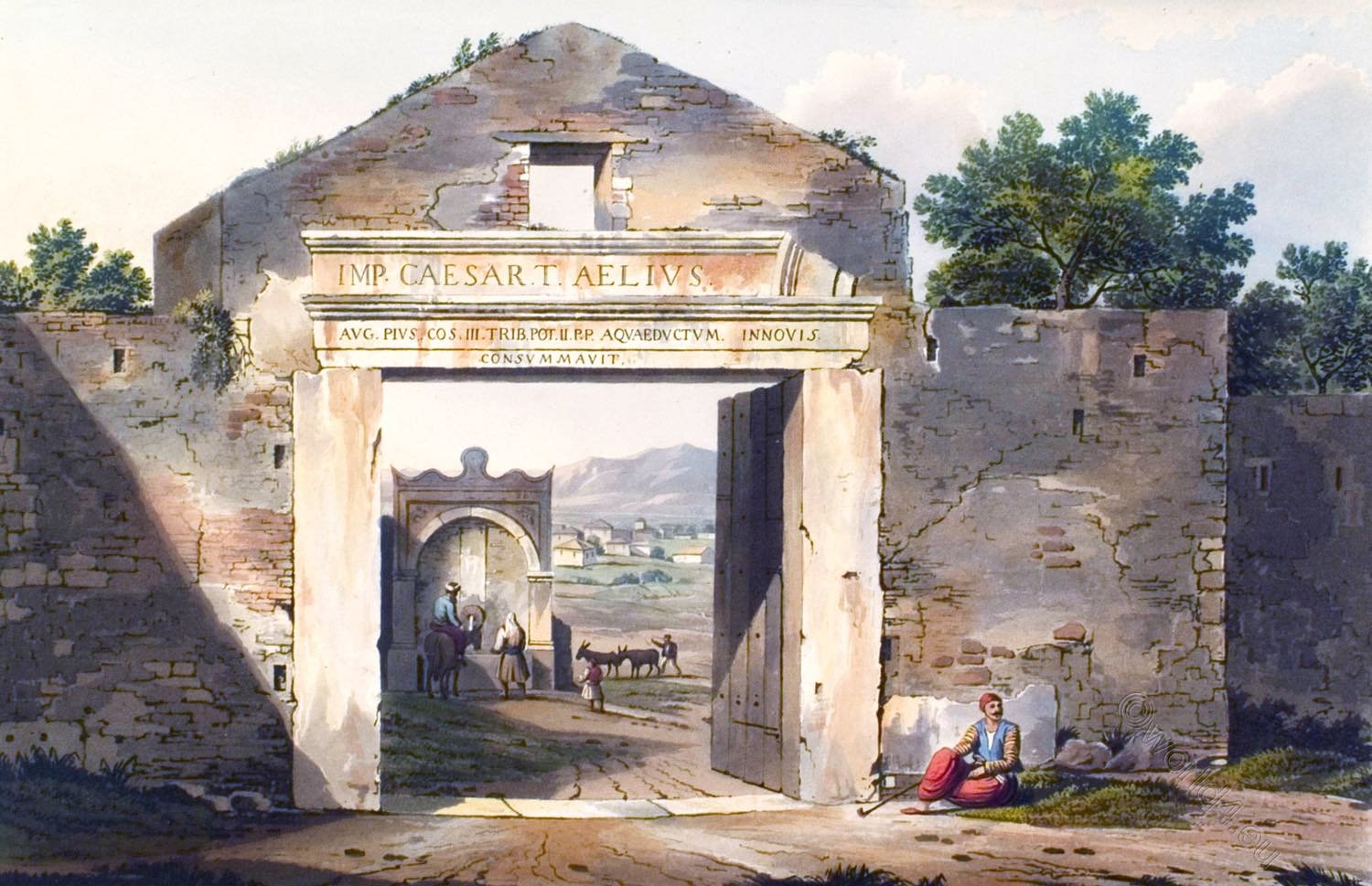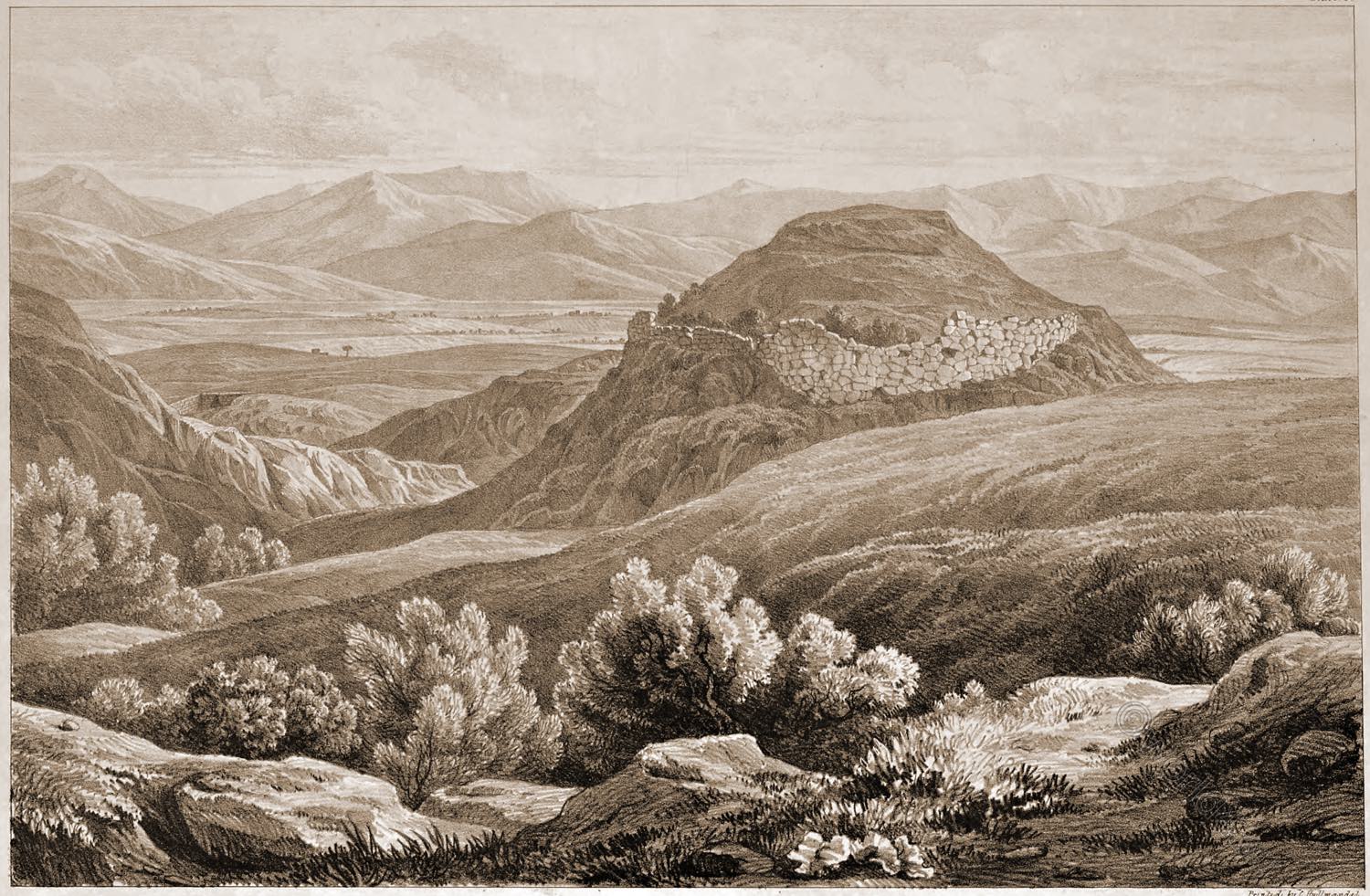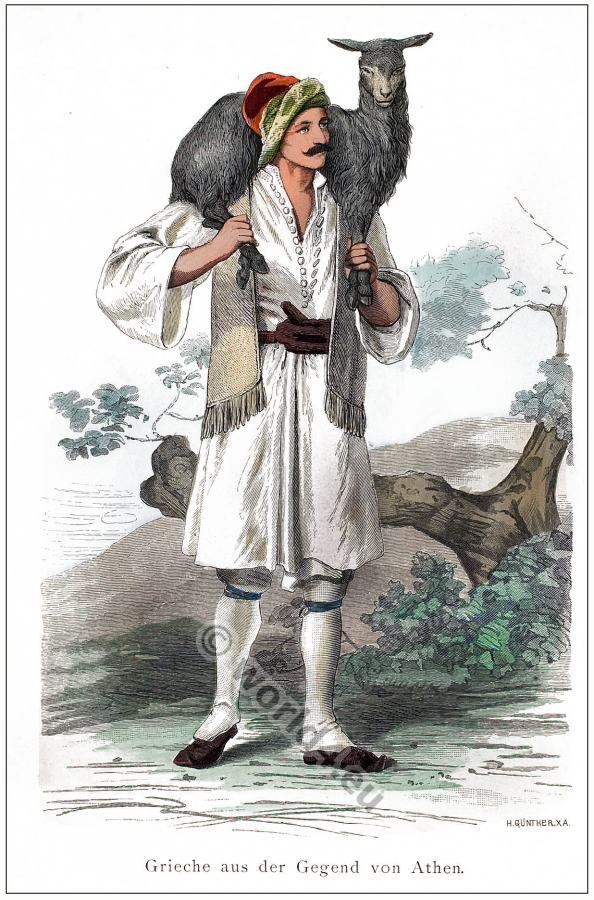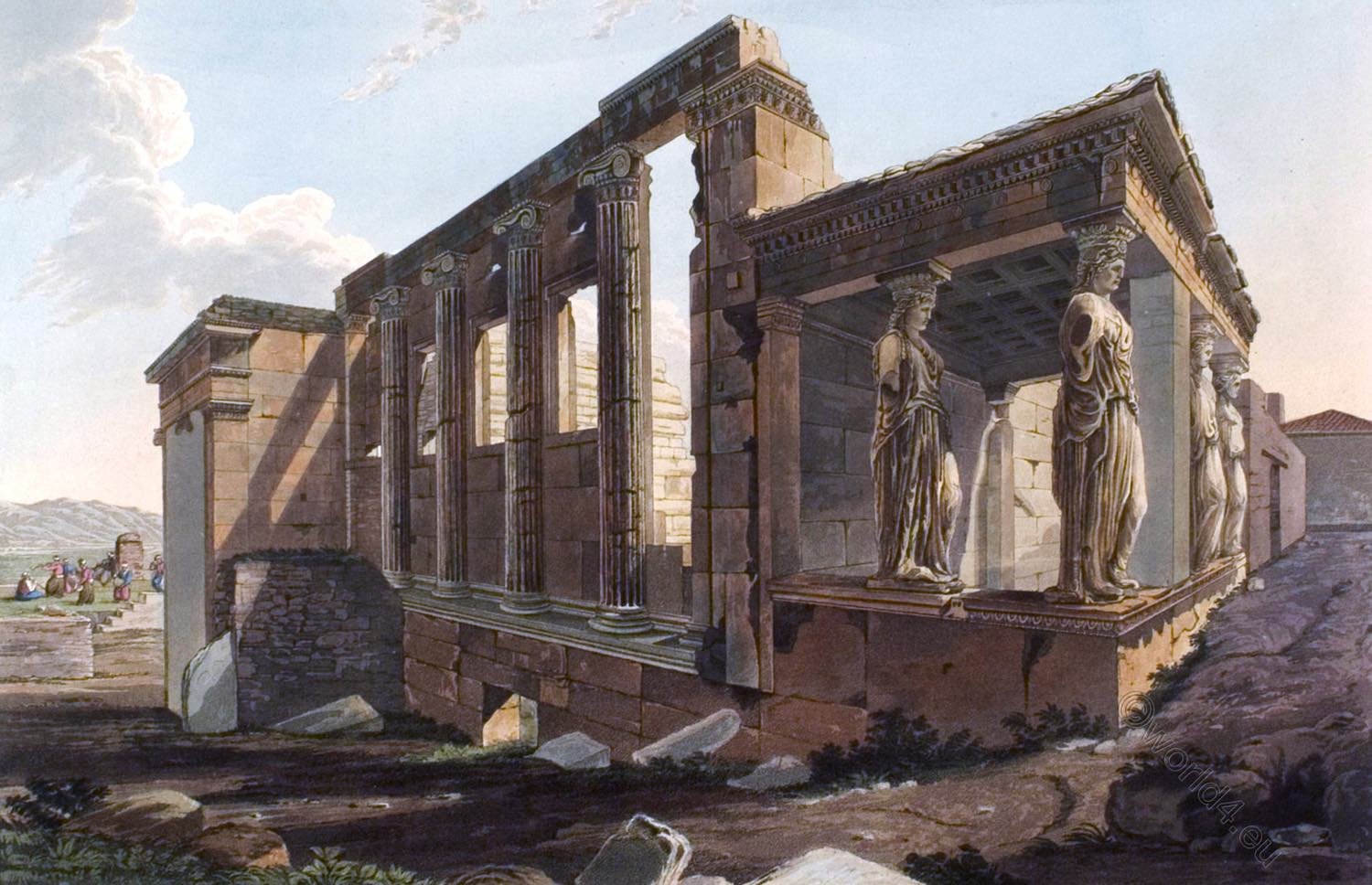
The Erechtheion is an Ionic-style temple on the Acropolis in Athens, built between about 420 and 406 BC.
SOUTH-WEST VIEW OF THE ERECHTHEION.
THE Erechtheion was composed of the united temples of Neptune Erechtheus, Minerva Polias, and Pandrosos, the daughter of Cecrops, The ruins of this elegant and singular edifice are situated in the acropolis of Athens, at the distance of about one hundred and fifty-six feet to the north of the Parthenon. The Athenians united the temples of Neptune and Minerva under the same roof, in order to commemorate the reconciliation between their favorite divinities; and Plutarch relates that a common altar wis raised in their honour, and denominated the Altar of Oblivion.
The western front of the Erechtheion, that is represented in this view, is pscudopcripieral, as the entablature is supported by round pilasters attached to the wall, by which the cella is inclosed. The windows between the pilasters were probably glazed with phcngilcs or mica.
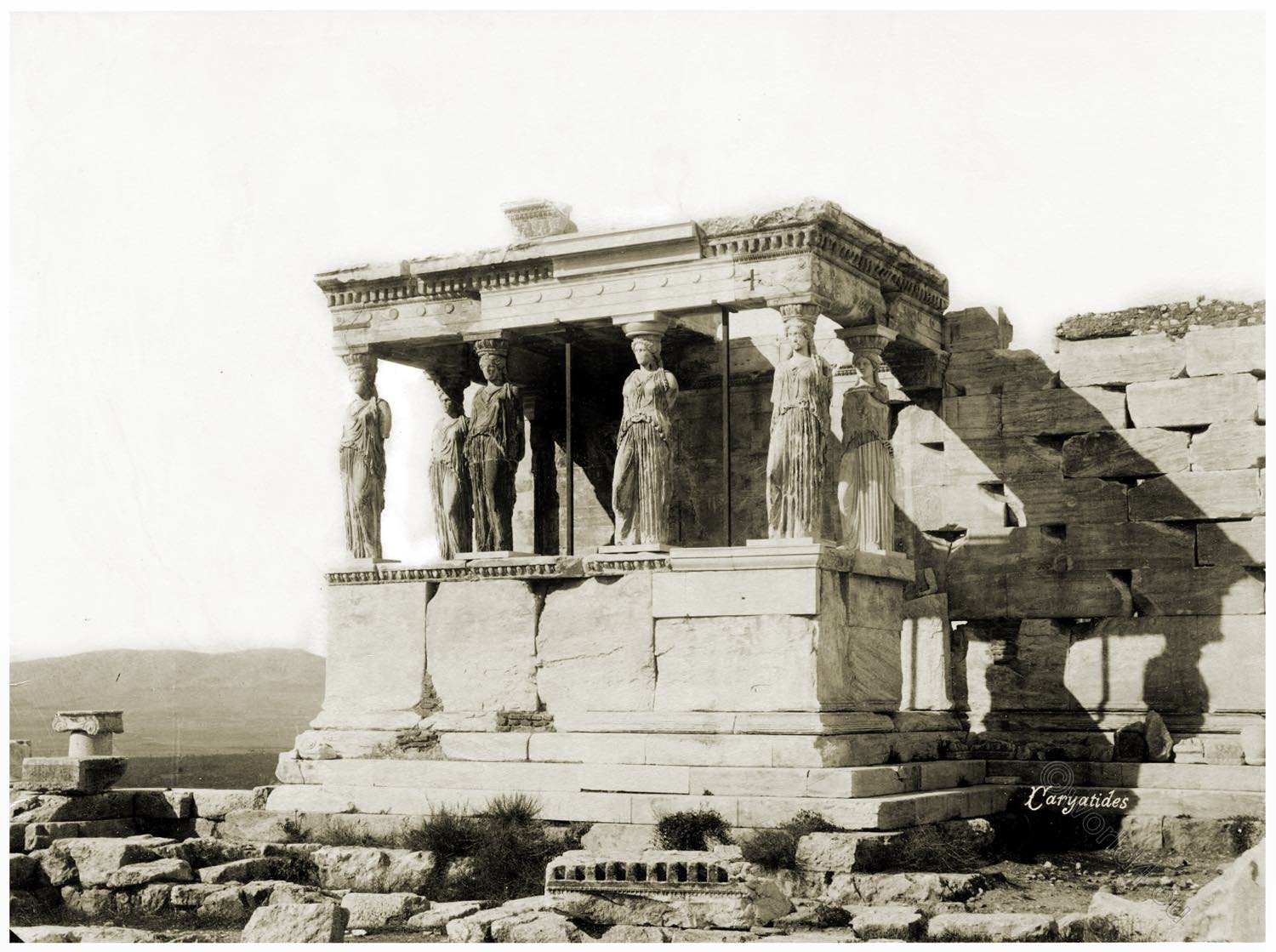
The further part of the edifice that is brought into this view is the northern tetrastyle portico, which is at present obstructed by a modern wall, and contains the ammunition and gunpowder for the garrison. The roof of this portico is covered with richly ornamented beams of marble, twenty-two feet in length.
The Pandroseion, which is attached to the south-west end of the Erechtheion, is so well known, and has been so copiously described by Stuart, that it would be superfluous in this place to make more than a few general remarks. The columnar figures, which support the entablature of this elegant little building, are supposed to represent the bondage of the Caryan females, the story of which is related by Vitruvius. Their original number was six; it is not known when the first was removed; the second was taken away in 1801, and is at present in the British Museum, where it is viewed with less interest, and produces less effect, than in its original position. The sculpture is severe and chaste, and peculiarly adapted to the place winch it occupied. The great Caryatid portico is roofed with large square blocks divided into laquearia richly ornamented.
Pausanias mentions the temple of Pandrosos in the same superficial manner as he does the other edifices of the acrojKilis, and only informs us that it is contiguous to the temple of Minerva Polias.
The figures represent the Turkish band of music, which plays in the acropolis every day at three o’clock. The distant mountain is Parnes.
Source:
- Views in Greece. Drawings by Edward Dodwell. Rod Well and Martin, London, 1821.
- Scrapbooks of mounted views, portraits, etc., relating to Europe and Egypt, 1891-1894
by William Vaughn Tupper (1835-1898.
Continuing
Discover more from World4 Costume Culture History
Subscribe to get the latest posts sent to your email.



